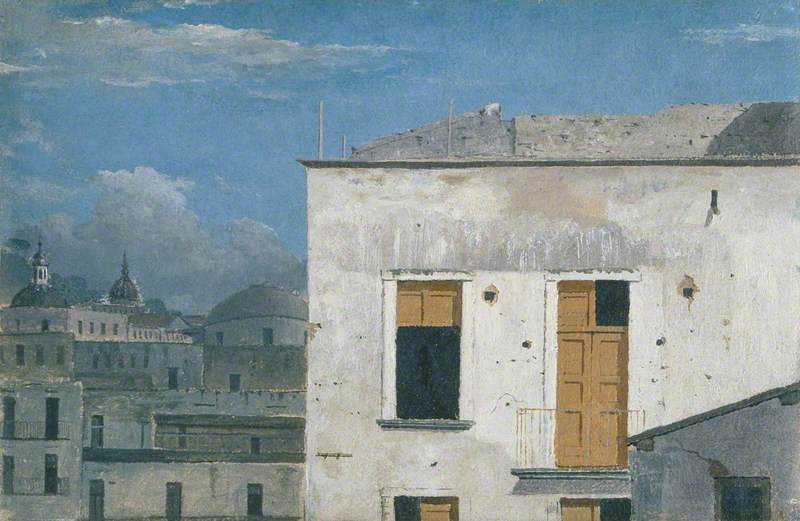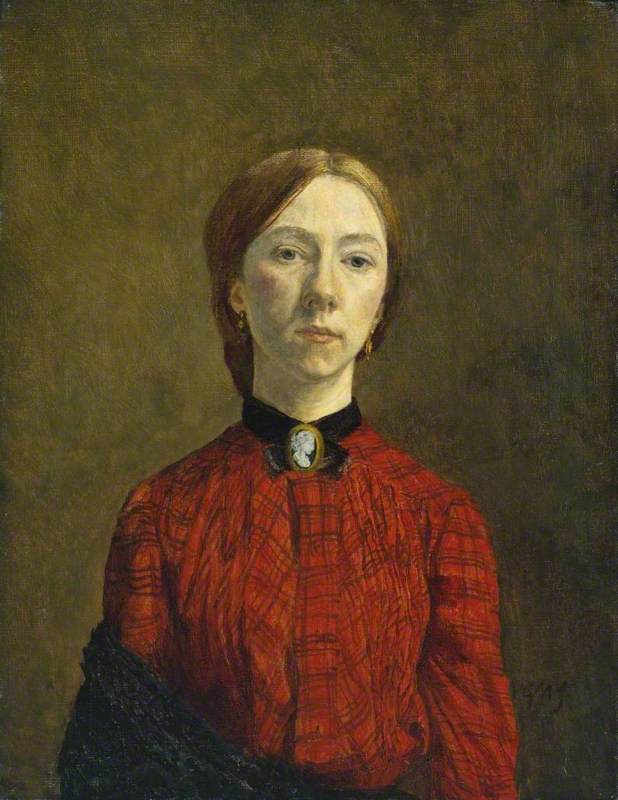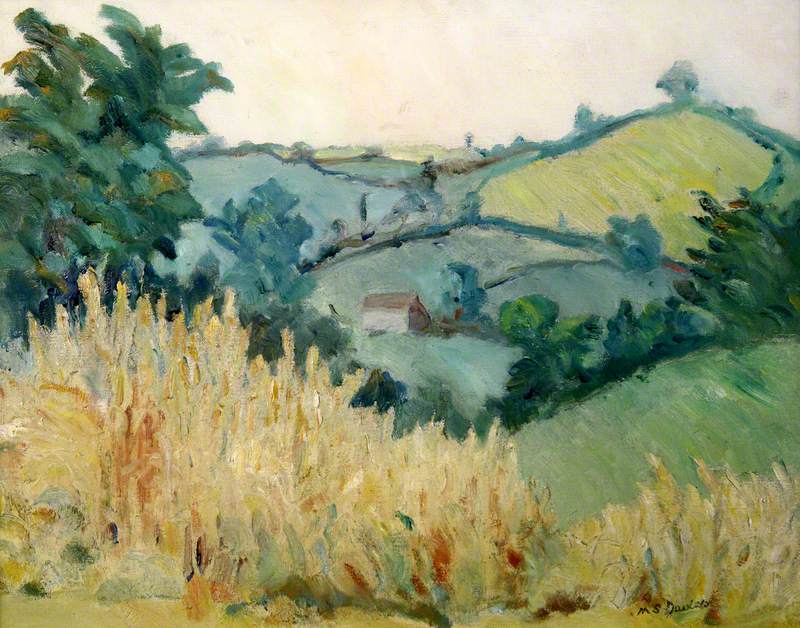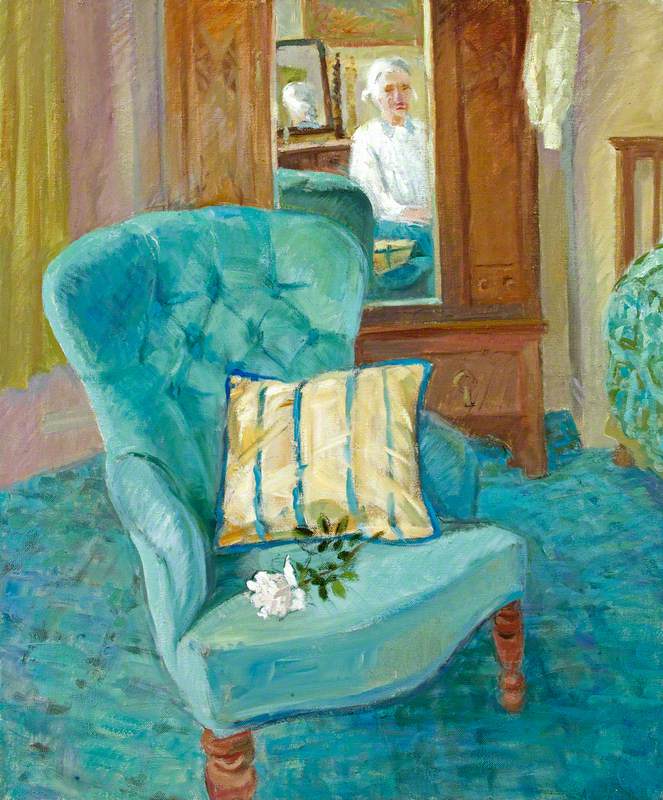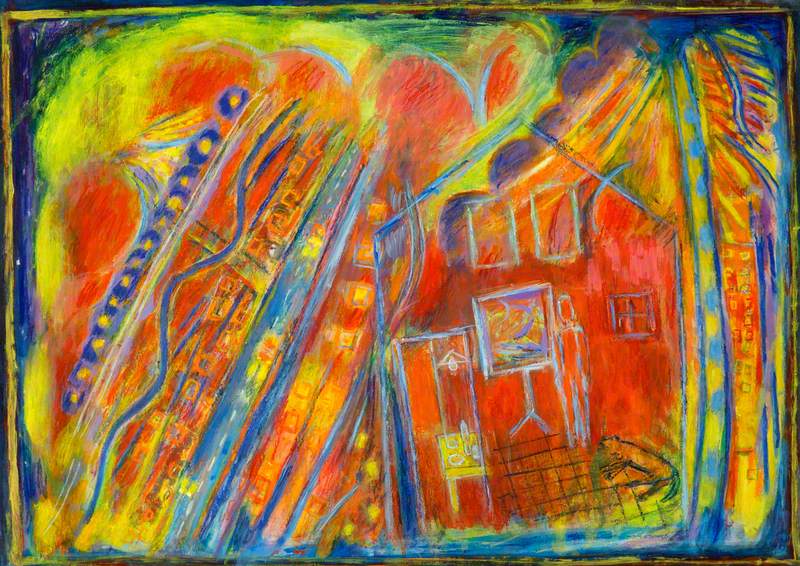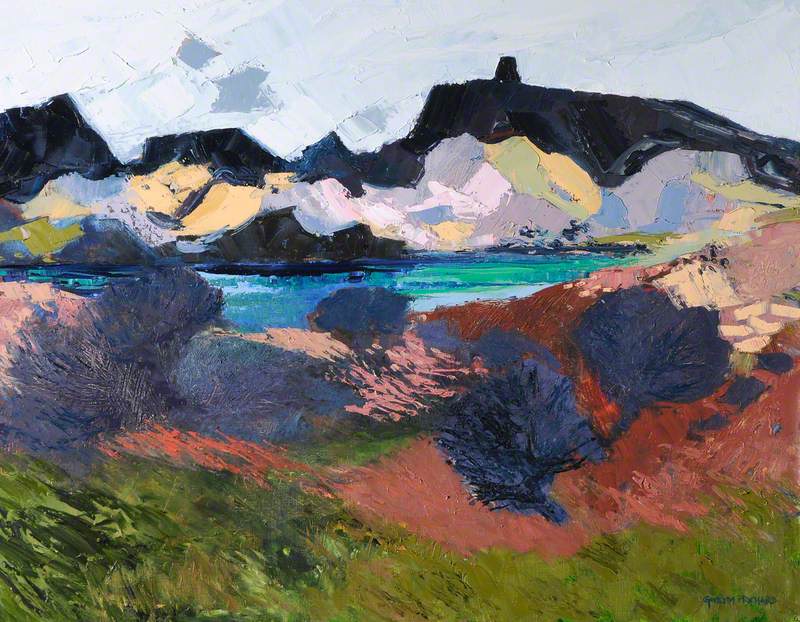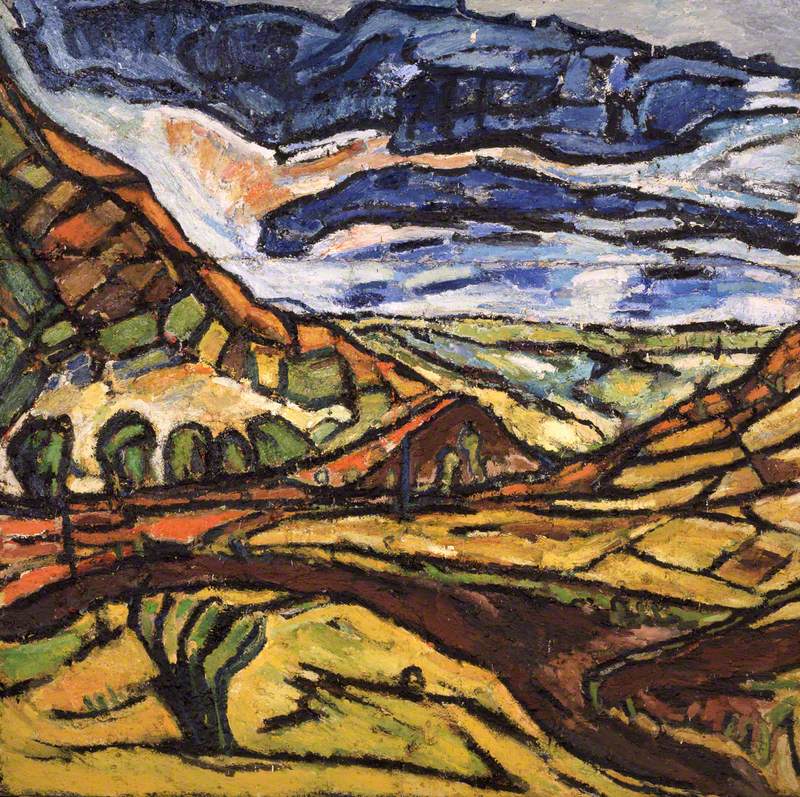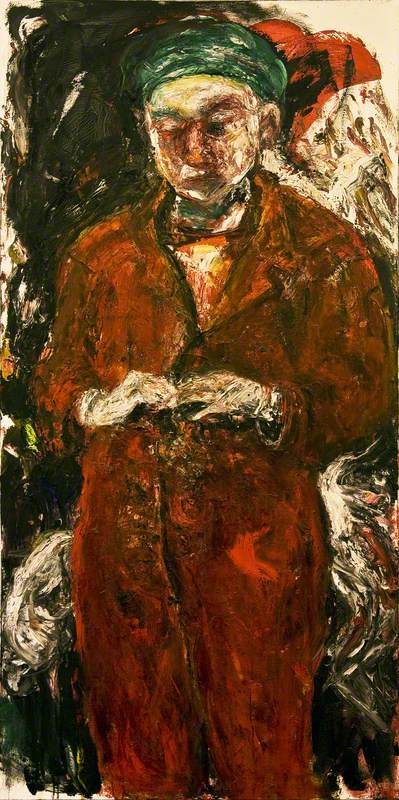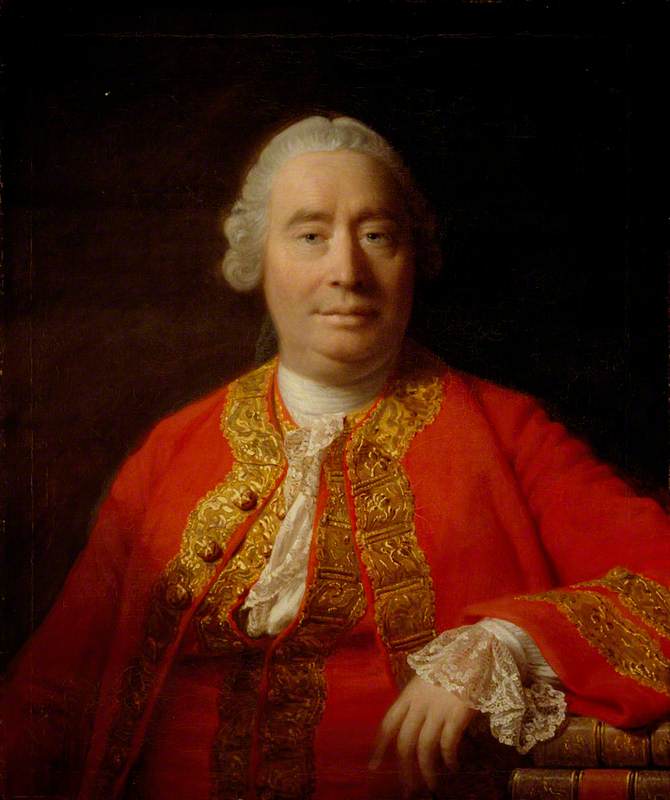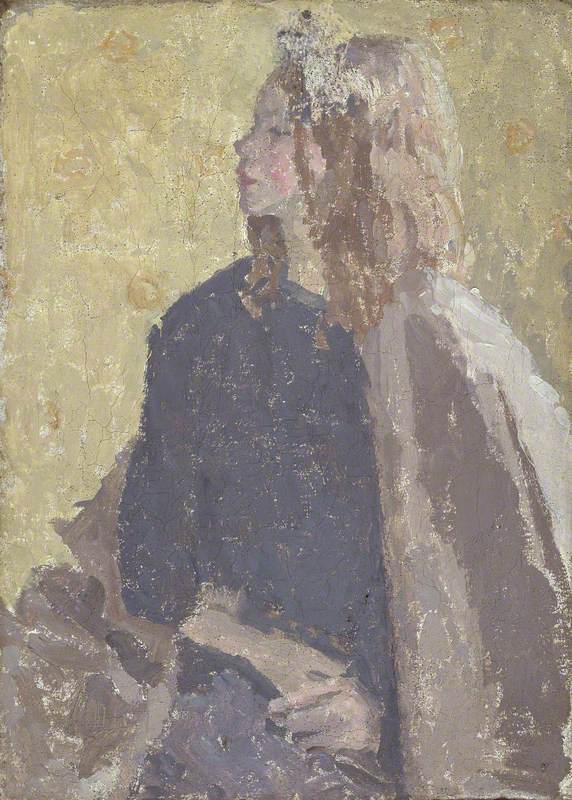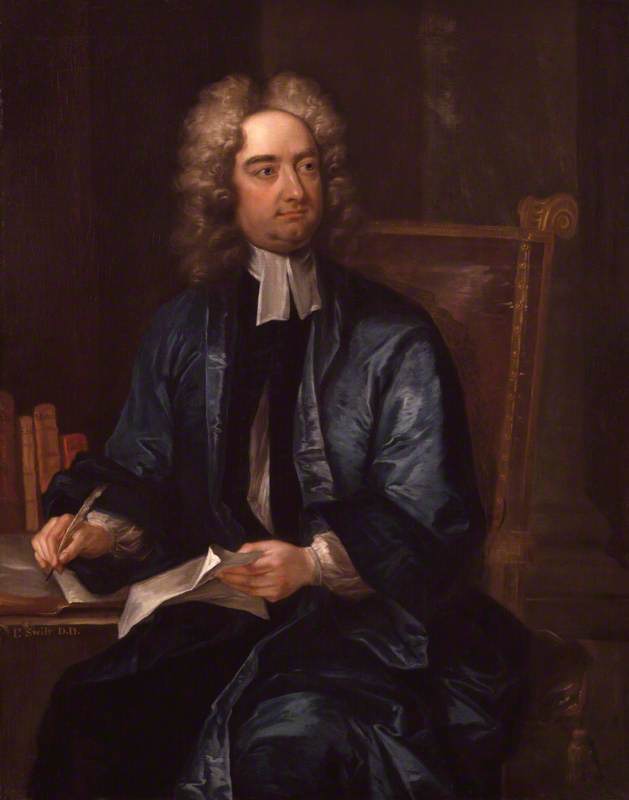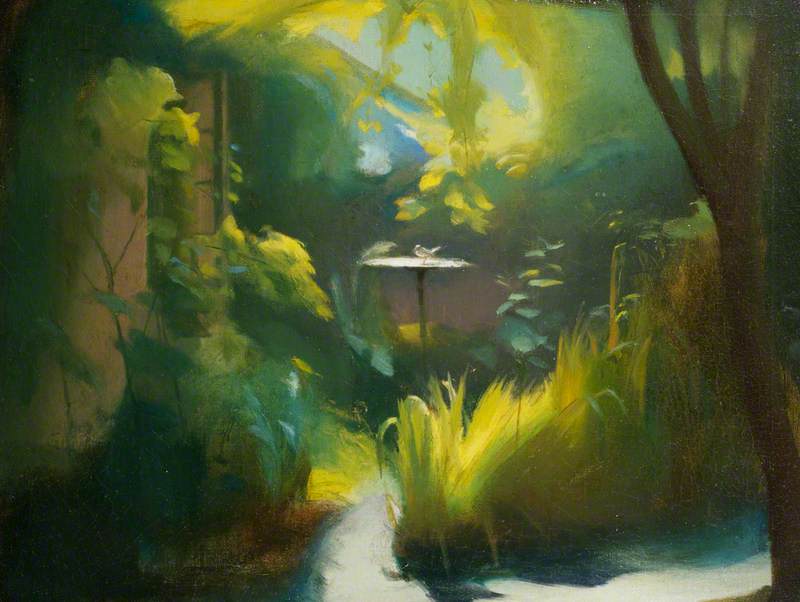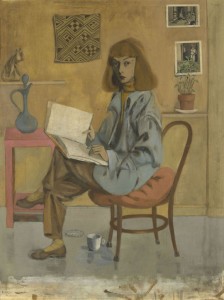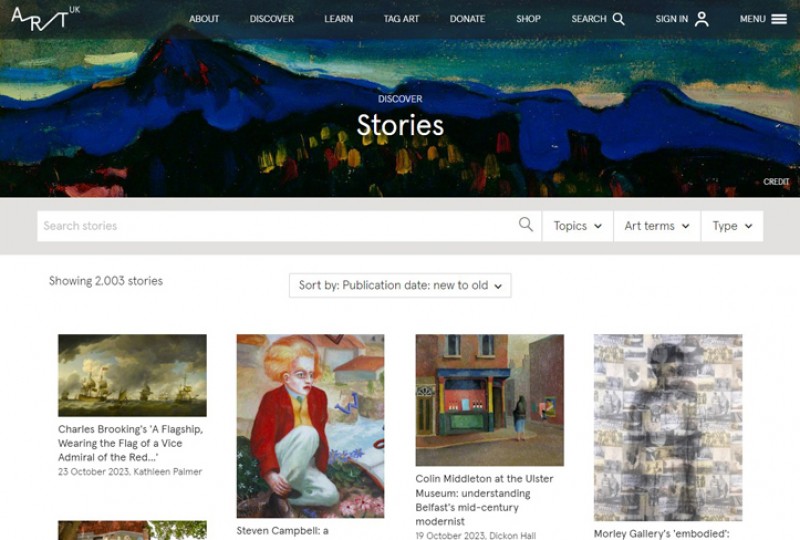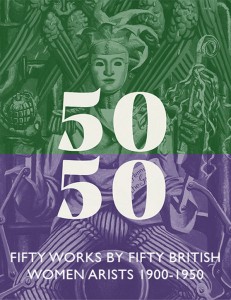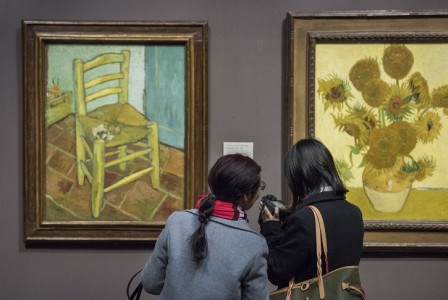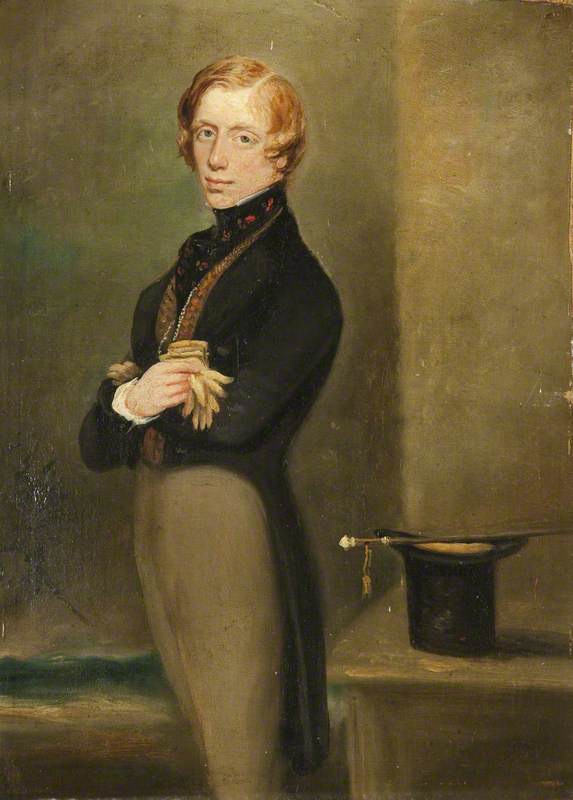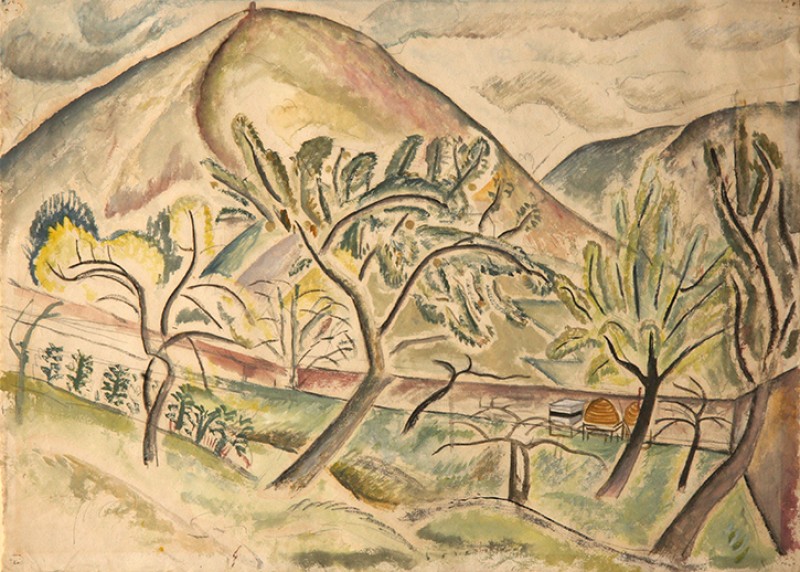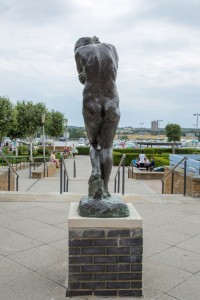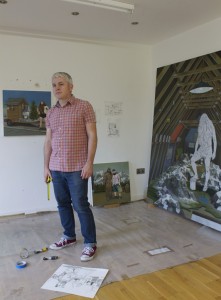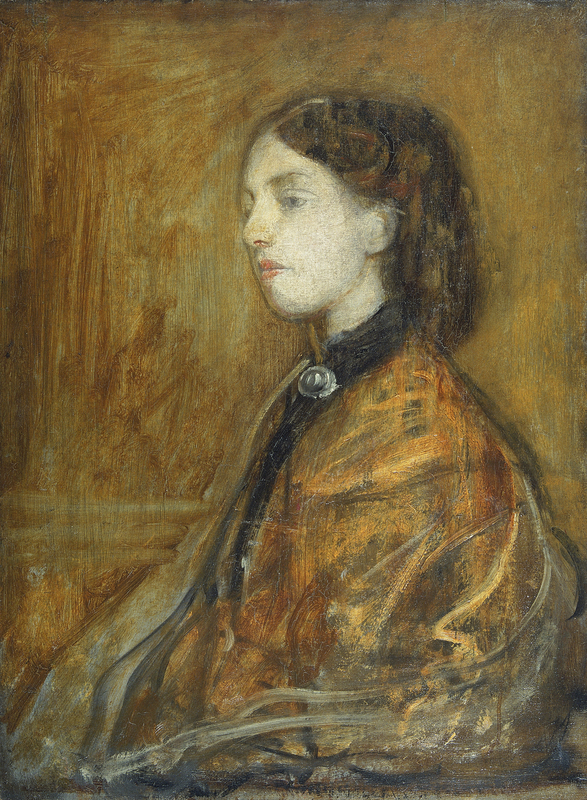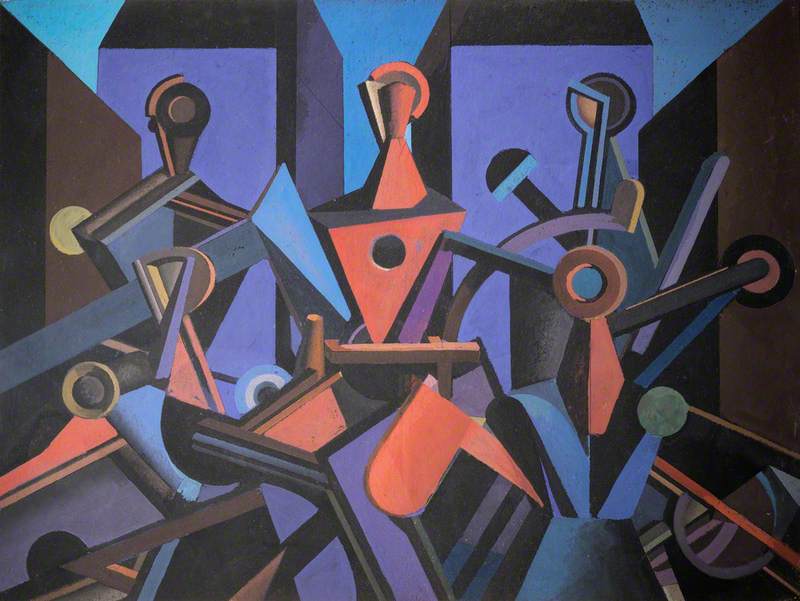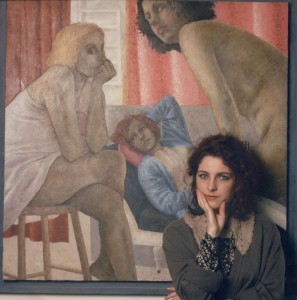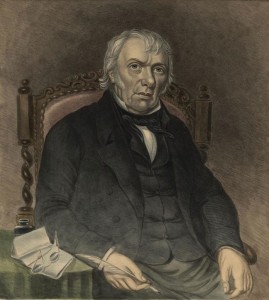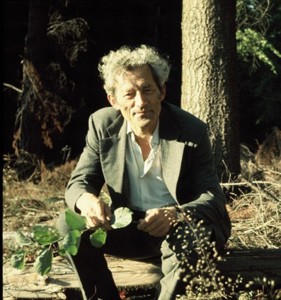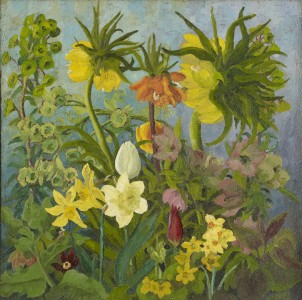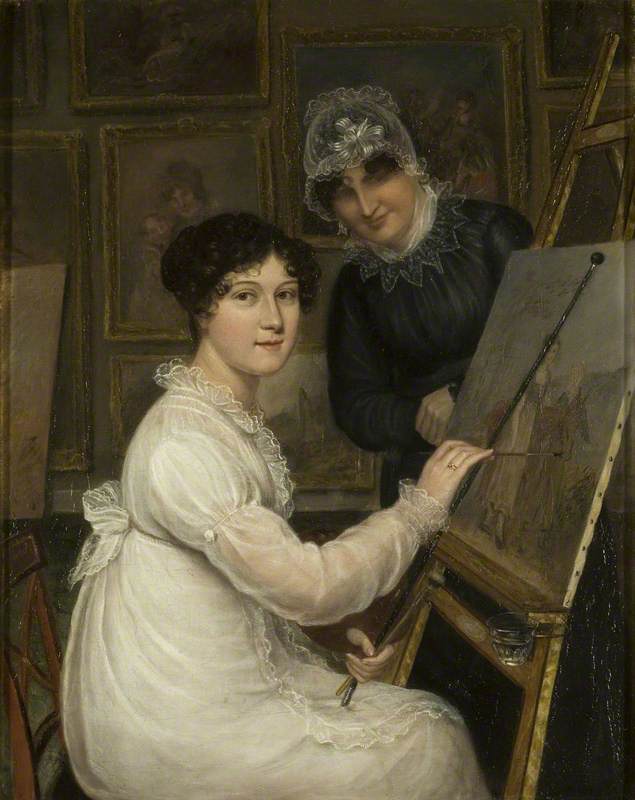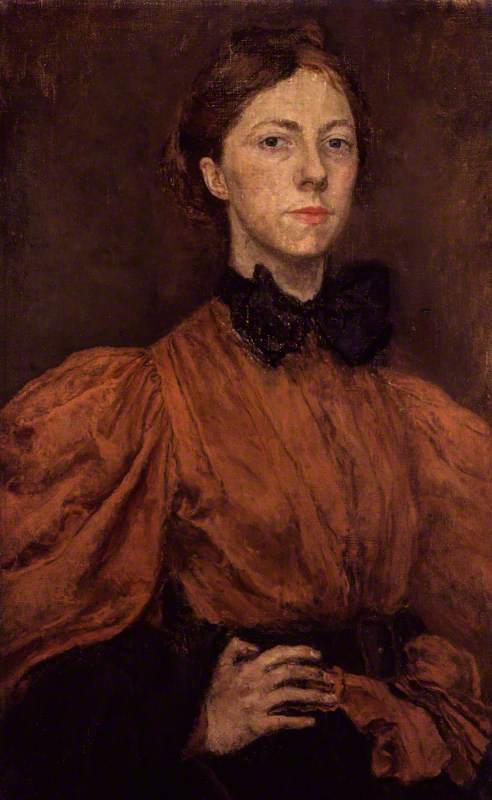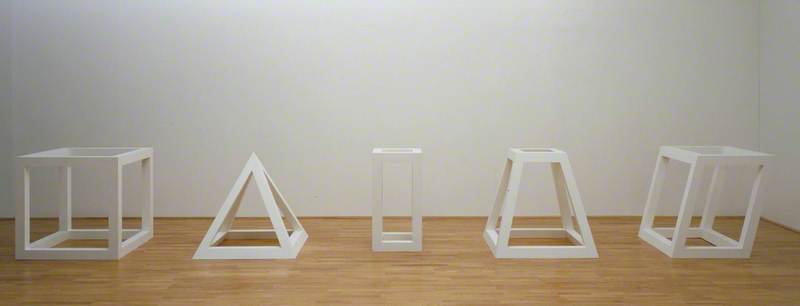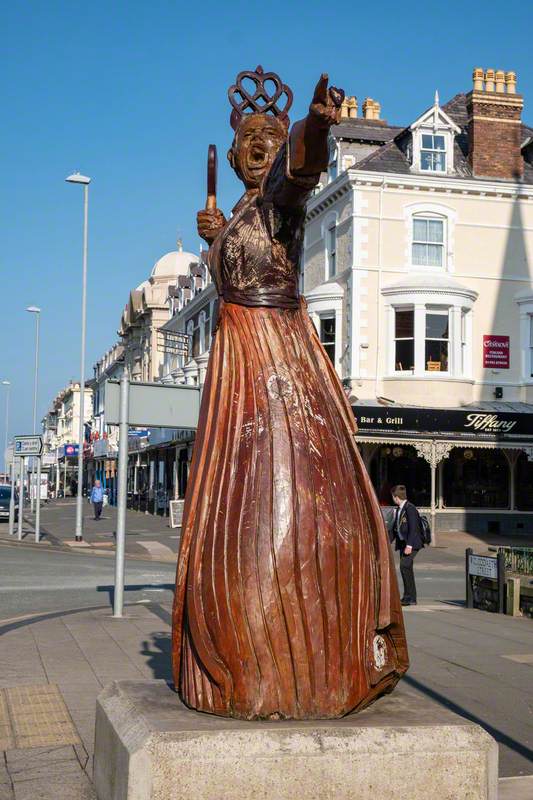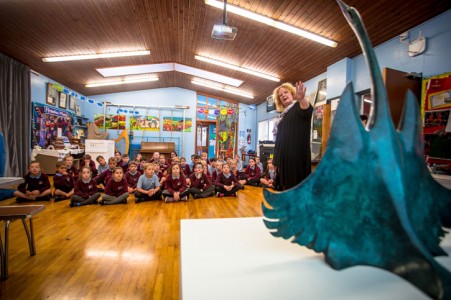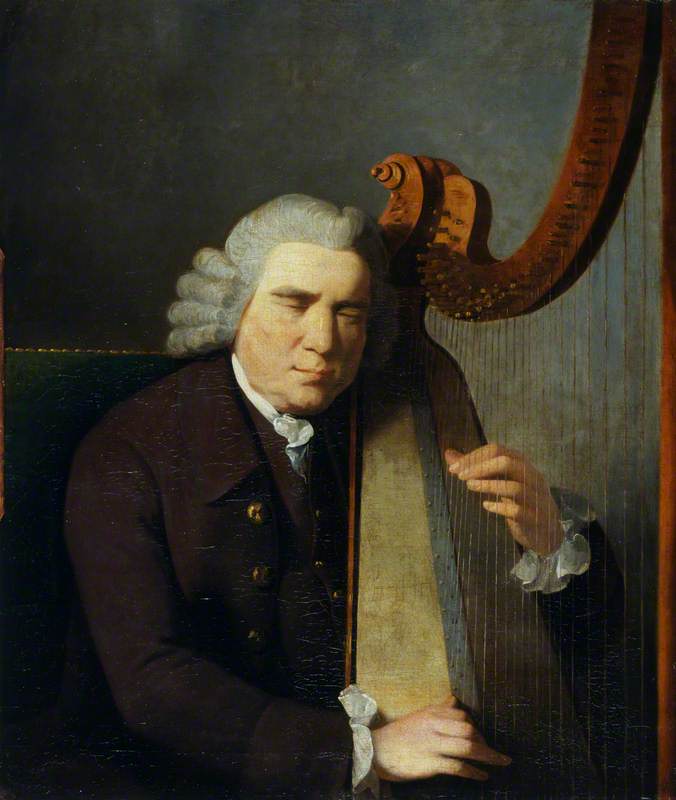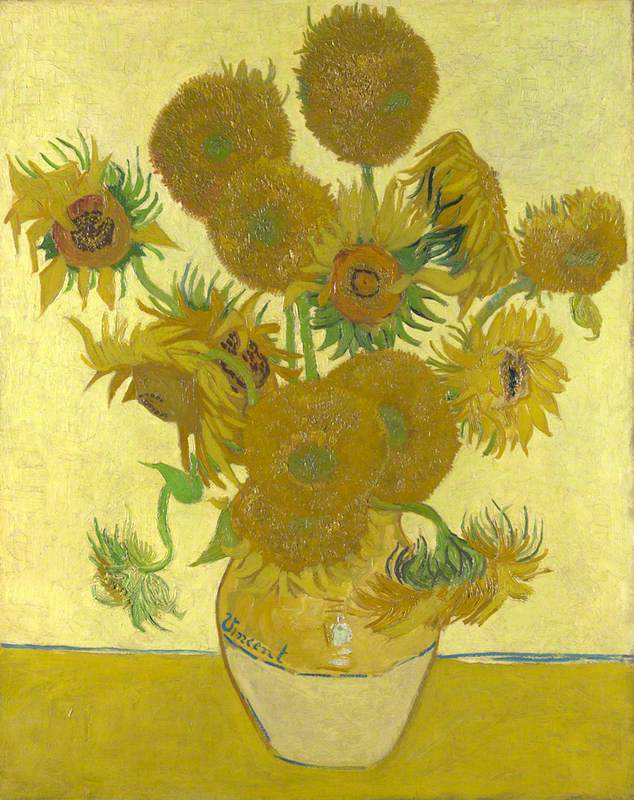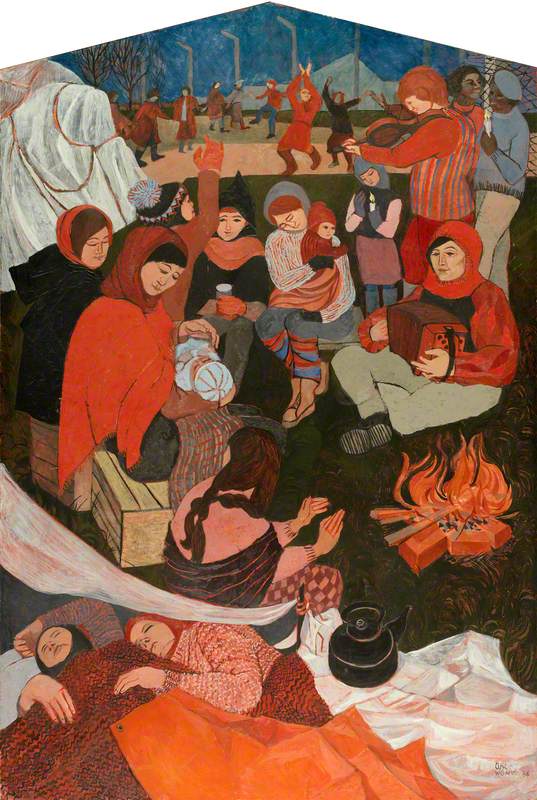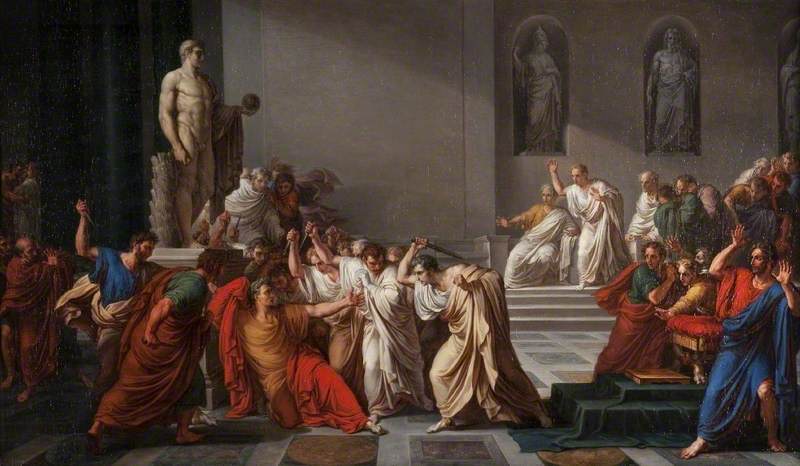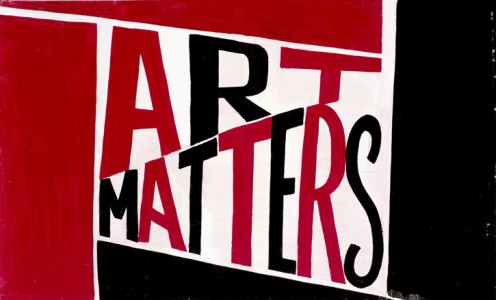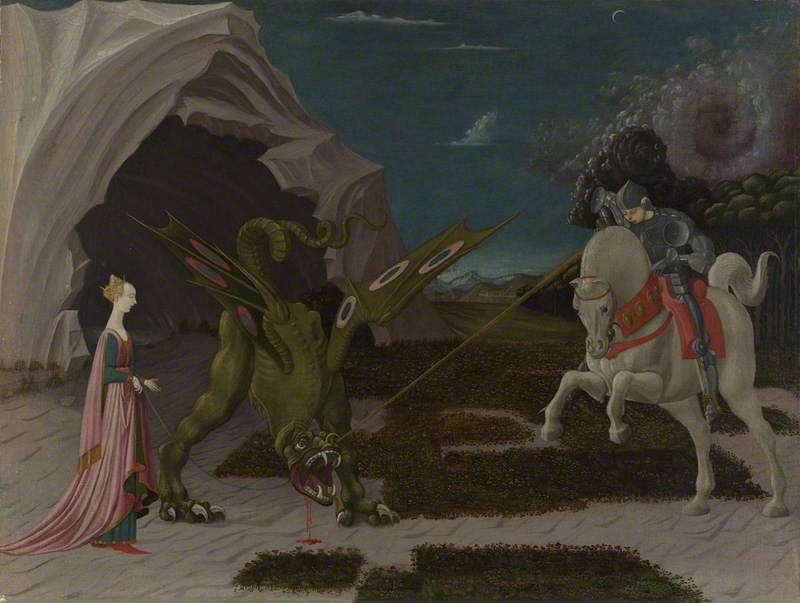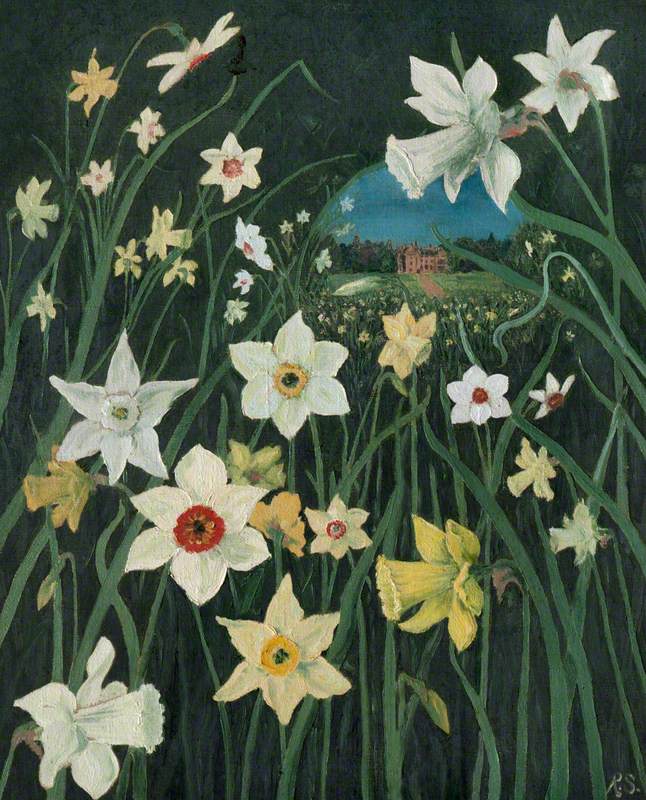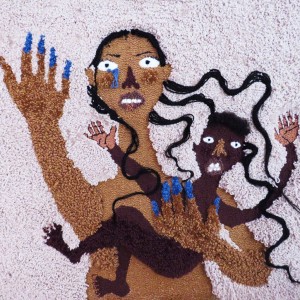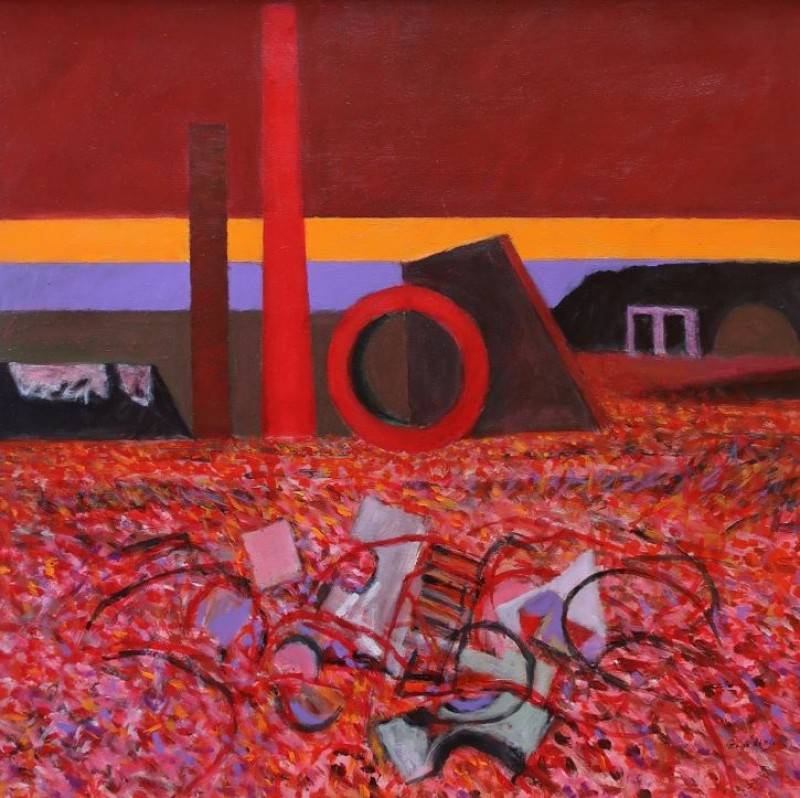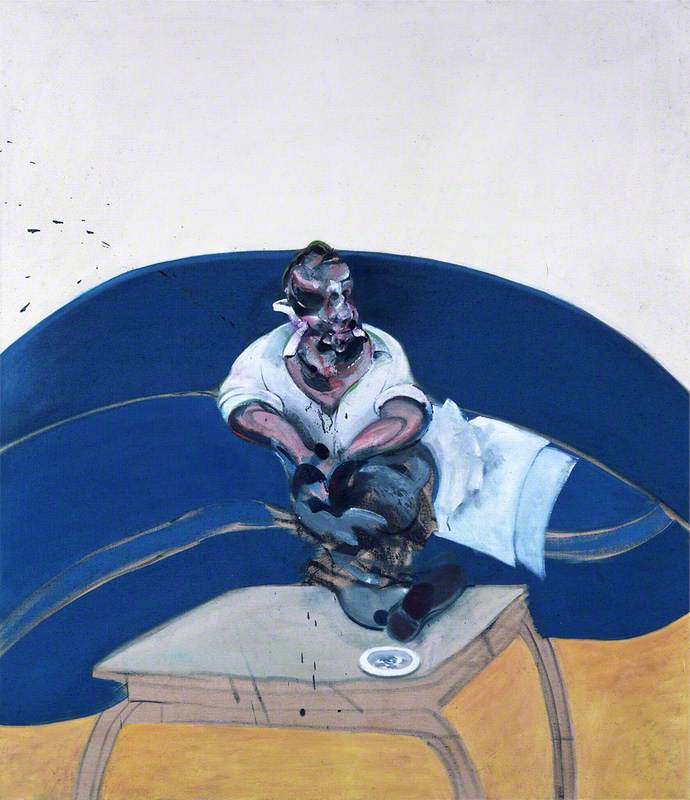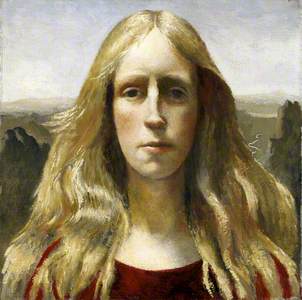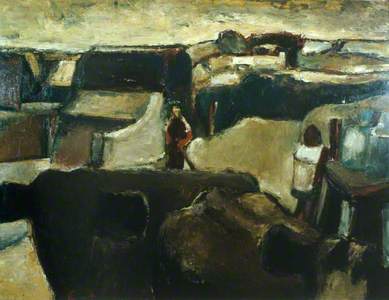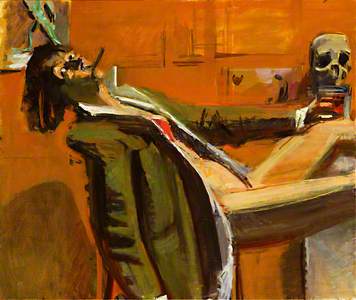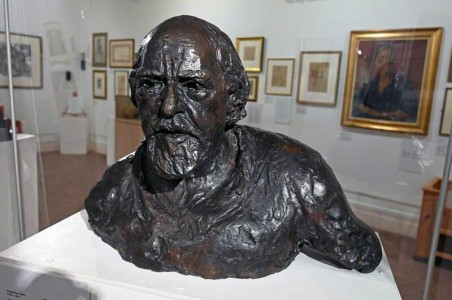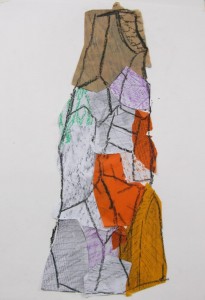'There is only one position for an artist anywhere; and that is upright.' – Dylan Thomas
In celebration of St David's Day on 1st March – and by extension all things Welsh – here's a selection of awesome artists who come from Cymru.
1. Richard Wilson
A View on the River Dee with Anglers
c.1770
Richard Wilson (1713/1714–1782) 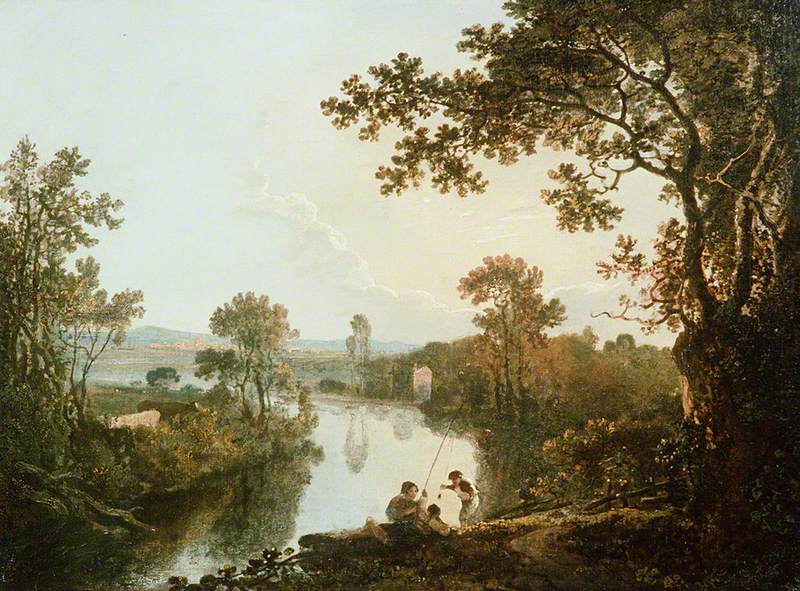
Richard Wilson (1713/1714–1782) was perhaps the first great British landscape artist – and he was Welsh! With his work he transformed landscape from an art that was essentially topographical to one that could be a vehicle for ideas and emotions. Wilson was greatly admired by later artists such as Crome, Constable and Turner.
Victorian art critic John Ruskin wrote that 'with Richard Wilson the history of sincere landscape art founded on a meditative love of nature begins in England' (we will have to forgive Ruskin that he didn't seem to know the difference between England and Wales...)
2. Thomas Jones
Thomas Jones (1742–1803) was taught by Richard Wilson. He painted some ambitious classical landscapes in imitation of Wilson, but he is best known for his oil sketches undertaken in Naples and Rome during 1776–1783, which are among the earliest British examples of this kind of open-air sketch. He painted little after 1789 when he inherited the family estate at Pencerrig, living out his years as a country gentleman.
3. Penry Williams
The Bay of Naples Seen from the Scalinata Petraio
1830s
Penry Williams (1802–1885) 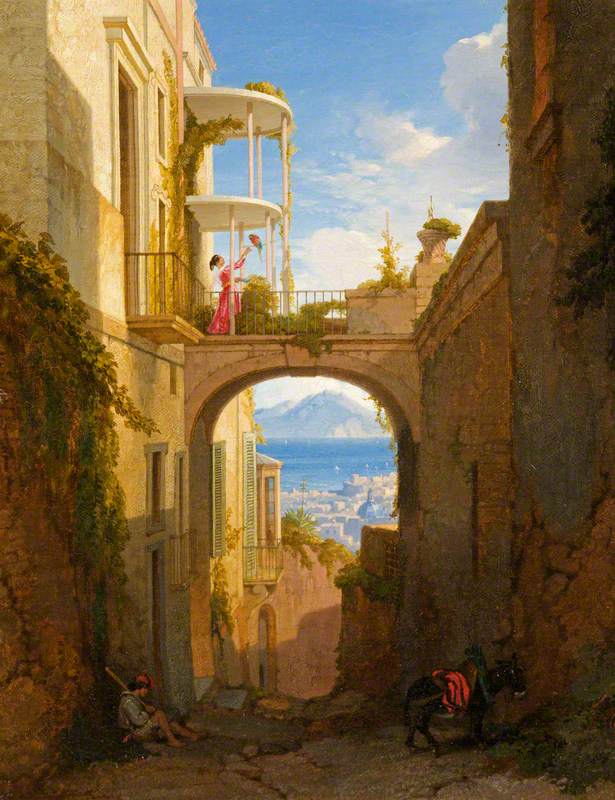
Penry Williams (1802–1885) was Welsh, but spent most of his adult life in Rome, moving there in 1827. For half a century, his studio was an attraction for English visitors to Rome. He was in a relationship with fellow Welshman the sculptor John Gibson, and died in the eternal city in 1885.
4. Christopher Williams
The Investiture of the Prince of Wales, 1911
1911
Christopher Williams (1873–1934) 
Christopher Williams (1873–1934) was born in Maesteg. His father wanted him to be a doctor, but after encountering Frederick Leighton's Perseus and Andromeda at Liverpool's Walker Art Gallery at the age of 19, he set his sights on becoming an artist.
As well as producing many fine landscapes of Wales and other European countries, he also painted scenes from the medieval Welsh tales known as the Mabinogion. He was commissioned to make portraits of the great and good, from the royal family (including the investiture of the Prince of Wales in 1911, the future Edward VIII) to Welsh Prime Minister David Lloyd George (in fact he painted Lloyd George three times!). Lloyd George described him as 'one of the most gifted artists Wales has produced.'
5. Gwen John
Gwen John (1876–1939) has often been unfairly overlooked in favour of her younger brother, Augustus, but in recent years her reputation has grown. This self-portrait is both striking for its use of colour and how isolated John has made herself, perhaps reflecting her feelings about the art world, still largely dominated by men at the time.
6. Augustus John
Dylan Thomas (1914–1953)
1937–1938
Augustus Edwin John (1878–1961) 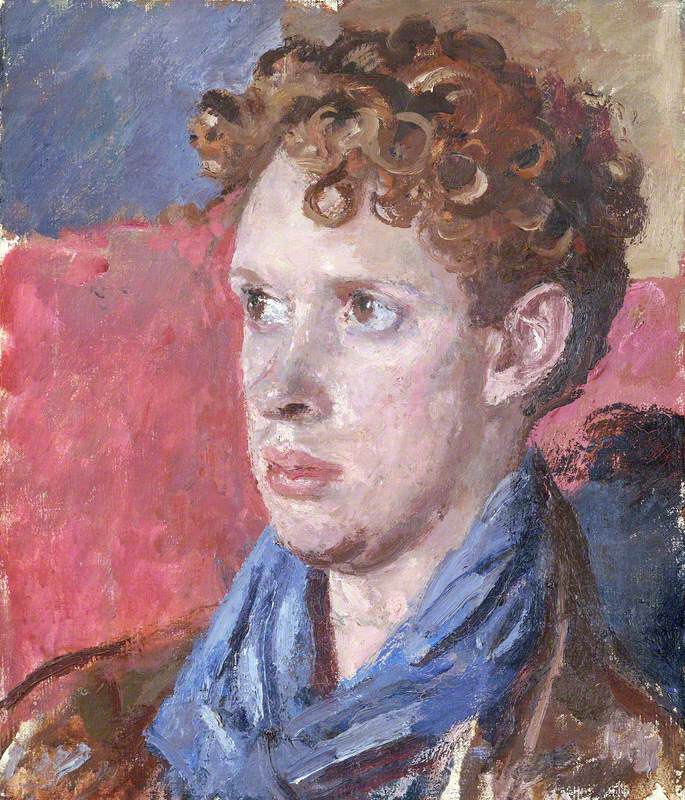
Augustus John (1878–1961) was Gwen John's younger brother. Celebrated throughout his life, he was the epitome of the unpredictable bohemian artist. This possibly stemmed from an accident where he hit his head, which seemed to change his personality – and possibly his artistic style. He is chiefly remembered for his portraits (the one above is of quintessential Welsh poet Dylan Thomas), and there are nearly 300 of his works in public collections in the UK.
7. Margaret Sidney Davies
Margaret Sidney Davies (1884–1963) was an art collector and patron of the arts. With her sister Gwendoline, she collected many fine examples of Impressionist and twentieth-century art, which the two bequeathed to the National Museum Wales. Their home, Gregynog Hall, was also gifted to the University of Wales and you can see the artworks still in the building on Art UK. Inspired by Van Gogh, Davies painted her own response to his Sunflowers.
8. Brenda Chamberlain
Self Portrait on Garnedd Dafydd
1938
Brenda Chamberlain (1912–1971) 
As well as being an artist, Brenda Chamberlain (1912–1971) was also a poet and novelist. She won the first two Gold Medals ever awarded by the National Eisteddfod of Wales in the Fine Art category. She was married briefly to fellow Welsh painter John Petts. This striking self-portrait evokes the composition of Renaissance paintings, with the full-face pose and misty landscape in the background.
9. Will Roberts
Will Roberts (1907–2000) was an Expressionist painter, born in Ruabon, Denbighshire – he moved to Neath in Glamorgan in 1918. In 1945, Roberts met the Polish artist Josef Herman who was living in the neighbouring town of Ystradgynlais. Roberts was influenced both by Herman's work and his local community, painting industrial workers and farmers, and domestic scenes of family life. This painting, Farm at Cimla, won the Byng-Stamper Prize for landscape painting, judged by Sir Kenneth Clark, in 1962. He was a member of 56 Group Wales, which aimed to raise the profile of modern Welsh art.
10. Kyffin Williams
The Way to the Cottages
1990–2006
Kyffin Williams (1918–2006) 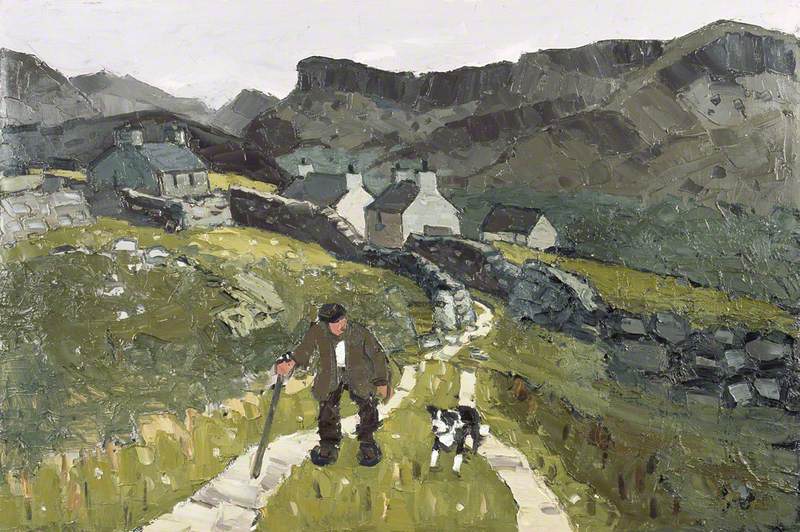
Kyffin Williams (1918–2006) was a painter and printmaker, known for his depictions of rugged landscapes and Welsh farming life. Widely acknowledged as one of the most influential Welsh artists of the twentieth century, his bold application of paint and idiosyncratic palette-knife style made his works immediately recognisable. You can buy a range of Kyffin Williams prints in the Art UK shop, the proceeds of which support the work of the National Library of Wales.
11. Joan Elizabeth Baker
Joan Elizabeth Baker (1922–2017) taught painting at Cardiff College of Art from 1945 until 1983 – she was the first woman to run a major art department in Wales. She did take part in some group shows, but exhibited rarely and focused mostly on teaching. Her pupils included Ernest Zobole. After retiring from teaching in 1984, she continued to paint, and died in 2017, aged 94.
12. Ernest Zobole
Ernest Zobole (1927–1999) was born in the village of Ystrad in 1927, to Italian immigrants who had moved to Wales in 1910. He spent five years training at the Cardiff College of Art, where his teacher was Joan Elizabeth Baker. He regularly discussed art with five fellow students on their commute from the valleys, and they became known as the Rhondda Group. Zobole was renowned for his colourful interpretations of everyday life that challenge conventional notions of actuality and appearance.
13. Gwilym Prichard
Gwilym Prichard (1931–2015) was a landscape painter. His dramatic and colourful depictions of Welsh landscapes often have a three-dimensional quality, and show a joy for the richness and beauty of his native land. He was married to fellow artist Claudia Williams.
14. Peter Prendergast
Peter Prendergast (1946–2007) was another landscape specialist (perhaps it's not surprising that Wales has produced many outstanding landscape artists with such natural beauty to inspire them!). He won prizes at the National Eisteddfod in 1975 and 1977. Sister Wendy Beckett described him as 'a superb colourist and a master of form'. His works are Expressionist – almost Cubist – and, like Will Roberts, he was a member of 56 Group Wales.
15. Cherry Pickles
My Sullen Art: Self Portrait as Dylan Thomas
2011
Cherry Pickles (b.1950) 
Cherry Pickles (b.1950) was born in Bridgend, and took an unusual route into art by taking a degree in mathematics before going on to study painting at Chelsea and the Slade School of Fine Art. She has taught at a number of art schools including Canterbury and Falmouth and was a senior lecturer at Cardiff. Her self-portrait as Dylan Thomas conjures up the essence of the Welsh poet. It is part of a series of six self-portraits which reflect her admiration towards the licence to 'live it up' granted to male artists – a poignant challenge to the traditional perceptions of female artists.
16. Shani Rhys James
Shani Rhys James (b.1953) is a painter based in Llangadfan, Powys. Although born in Melbourne, Australia, to a Welsh father and Australian mother, she has lived in Wales since 1984. One of Wales' most significant living artists, she won the Aberystwyth Open in 1992, the Mostyn Open, the Gold Medal at the National Eisteddfod, the Hunting Observer Art Prize (1993) and second prize at the BP National Portrait Award. She was BBC Wales Visual Artist of the Year 1994. This painting is part of BBC Cymru Wales' collection, purchased in 1993.
Andrew Shore, Head of Content at Art UK
